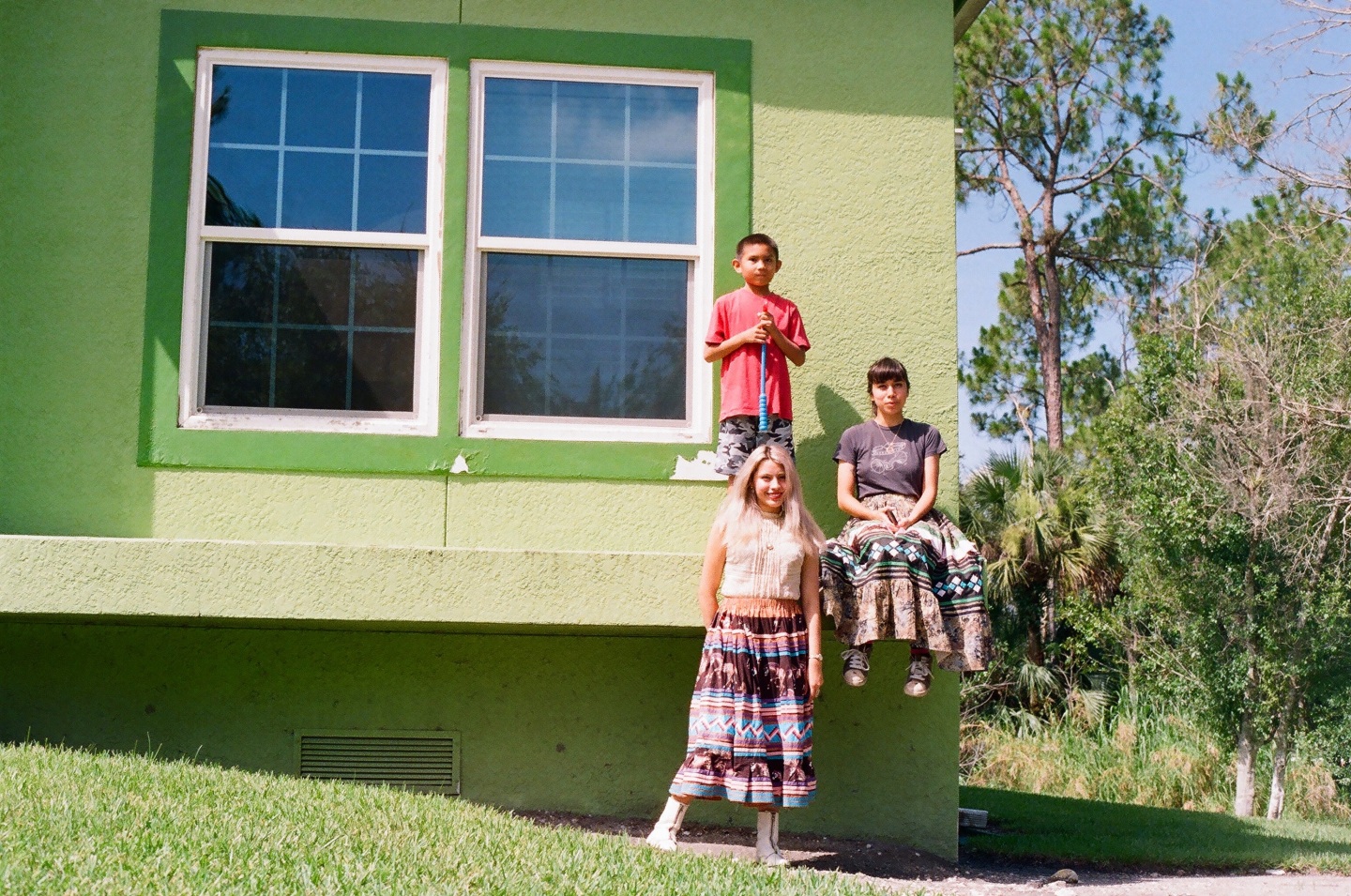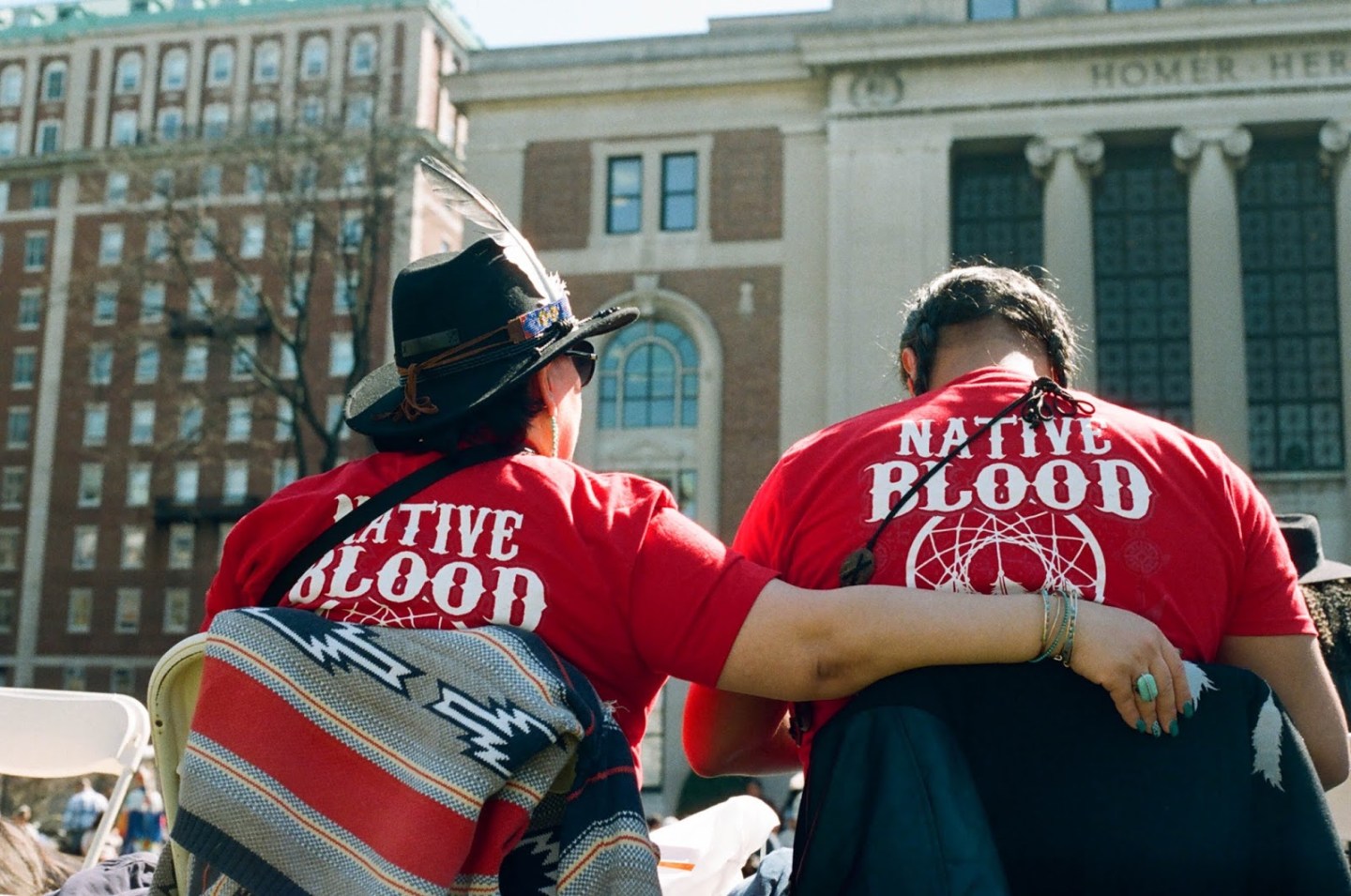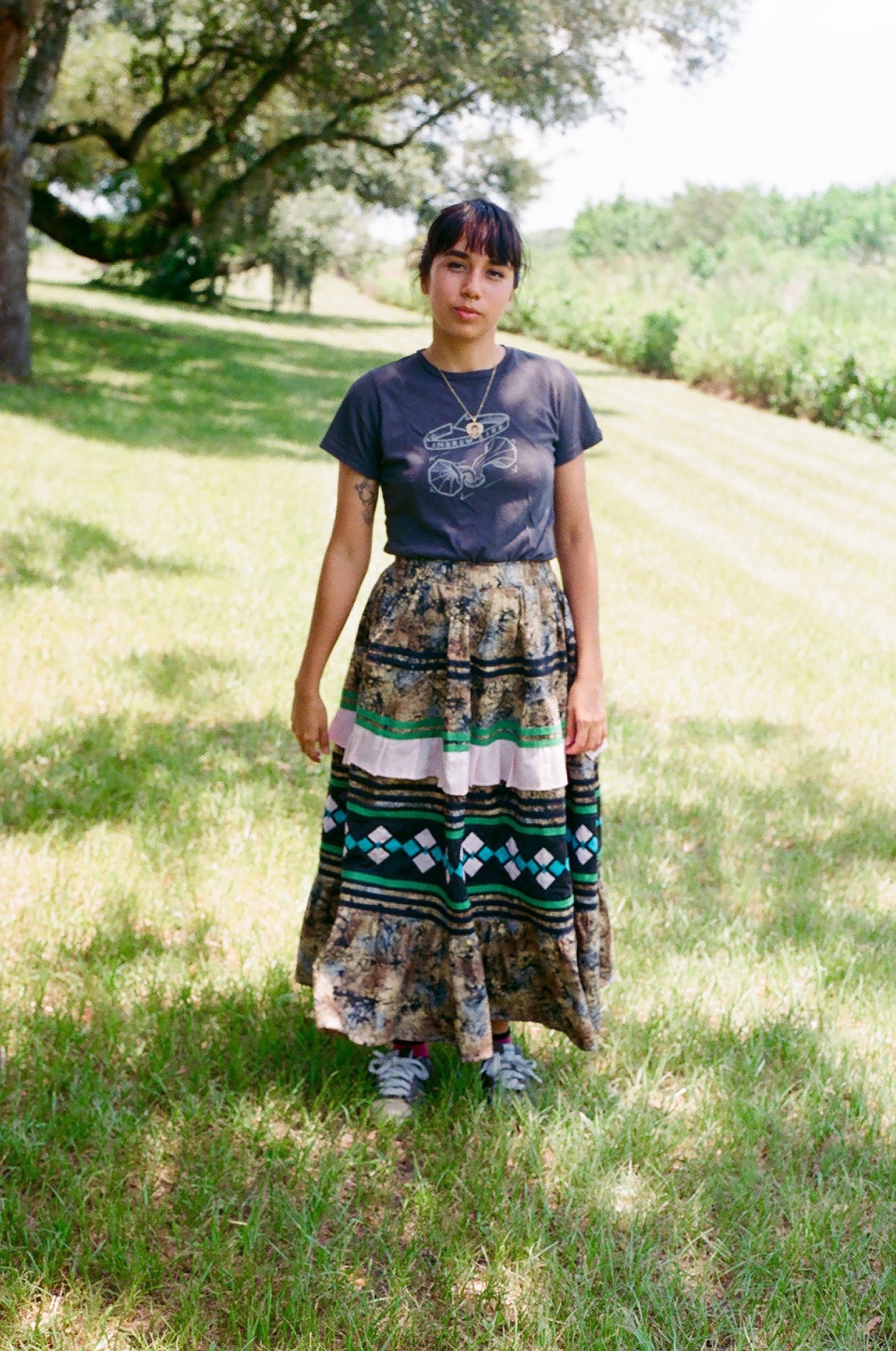Indigenous Peoples’ Day Helped Me Find My Voice
In celebrating the resistance of Native American people, I found the strength to heal old wounds and imagine a future without erasure.
 Author's family on the Big Cypress Seminole Reservation
Author's family on the Big Cypress Seminole Reservation
In my sophomore year of high school in Fort Lauderdale, Florida, I was leaving my English class when a friend called. He said there was an emergency in our school’s student quad and that I needed to get there immediately. Flustered, I hurried over with an armful of textbooks. As I approached, I noticed he wasn’t alone, but was instead huddled in a group with some boys from the lacrosse team. He called me over, and an unease began trickling through my body as the boys smiled in anticipation. Once in hearing range, they started chanting “rain dance” in unison — I felt like I was watching the scene while hovering above my own body. They wanted to skip practice that afternoon and thought it would be hilarious to convince me, the only Native American student in my high school, to perform some kind of ceremony. Humiliated, I turned and walked away without saying a word, stifling burning tears and an urge to run into oncoming traffic.
My friend later apologized, and I forgave him because it was the easiest thing to do. I didn’t know how to explain what I felt, why what he had done was wrong, and what it meant to me as a Seminole Indian woman. I was confused, ashamed, and ready to pretend it never happened.
At that time in my life, I had never seen or read anything about a young indigenous person addressing an offensive situation. There were no Native faces or voices in the magazines, books, talk shows, or movies I consumed — just an uncomfortable radio silence that I mimicked in my own actions. I harbored a rage that distorted the way I thought about myself and my non-Native peers. I felt like a misunderstood outsider in my own country. And I felt powerless because non-Natives could so easily tear my self-respect apart, no matter what their intentions.
Suffice it to say that, six years on, I’ve begun to heal these wounds with self-love, knowledge, and surrounding myself with people who understand what it’s like to suffer silently in the face of racism. I will never forget the first Indigenous Peoples’ Day — a holiday reframing the American historical narrative by denouncing Christopher Columbus — I celebrated as an undergraduate at Columbia University. We organized a die-in protest against Columbus, where students wearing red sprawled across the main walkway of the campus as others handed out informational flyers. The unity, laughter, and unspoken trauma we shared as Native American students seeking redress resonated throughout the rest of my undergraduate career. Today, celebrating Indigenous Peoples’ Day is critical to my ongoing process of understanding who I am and why I matter.
 Columbia University's 6th Annual Pow Wow
Columbia University's 6th Annual Pow Wow
Celebrating Indigenous Peoples’ Day is critical to my ongoing process of understanding who I am and why I matter.
Indigenous Peoples’ Day takes place on the same day as Columbus Day as a means to critique the latter and honor the survival, strength, and future of indigenous peoples and our cultures. In 1992, the city of Berkeley, California held the inaugural Indigenous Peoples’ Day, a celebration brought to life by a pow wow where Natives and non-Natives danced, sang, and shared traditions with one another. Today, 26 different cities legally recognize Indigenous Peoples’ Day, including Albuquerque, New Mexico, Phoenix, Arizona, and Olympia, Washington.
Columbus Day isn’t just offensive because it celebrates a violent man who facilitated the rape, torture, enslavement, and ultimate slaughter thousands of societies. The veneration of such a paternalistic historical figure represents something utterly inexcusable: Columbus Day celebrates colonization.
I’m tired of people thinking that America was a fruitful, unoccupied, never-ending sprawl of land that European settlers tamed as a blank canvas for their society. I’m so exhausted, down to my core, that the general American public does not understand the gravity of the Native American genocide that took place so that the 50 states could become a country they call home. Tens of thousands of independent nations on Turtle Island (the indigenous name for North America) were exterminated, displaced, or left to die a slow and painful death of institutionalized violence on reservations. We build our houses, schools, and strip clubs on land the U.S. acquired through massacre, displacement, and forced assimilation.
Contemporary Native issues, such as the Navajo nation’s food scarcity and the missing and murdered indigenous women in First Nations communities of Canada are largely ignored by the general public due to lack of mainstream media coverage. And it’s not just the media that’s failing to acknowledge our existence, outside of romanticized ideas about Buffalo Bill’s Wild West and dream catchers. Look in any American history textbook or high school syllabus and you’ll probably find a paragraph about the “primitive” chiefs and warriors that existed over a hundred years ago. It’s not your fault that you don’t know the difference between the Miccosukee and Mohawk nations — we don’t live in a world where indigenous people are even recognized as modern communities.
And, as I’ve learned through personal experience, the impact of such erasure can be traumatic. Repeated psychological studies have proven that inaccurate and negative representations of Native Americans can damage our self-esteem, limit our perceived academic and social potentials, and lead to depression and anxiety.
 Author's younger sister on the Big Cypress Seminole Reservation
Author's younger sister on the Big Cypress Seminole Reservation
I’m tired of people thinking that America was a fruitful, unoccupied, never-ending sprawl of land that European settlers tamed as a blank canvas for their society.
For me, Indigenous Peoples' Day is a growing reminder that we are still here. Every year on the second Monday in October, my Twitter feed is flooded with indigenous faces, opinions, and a contagious Native pride that a younger me would have wielded like a sword against bigotry. Still, although I feel safer, and even encouraged, to voice my thoughts on Native American issues — like the Dakota Access Pipeline or the appropriation of spiritual practices — I can’t help but feel a suffocating pressure to represent the entirety of Native American identity. As a writer deeply entrenched in popular culture that too often erases Native Americans, the urge to be the “right kind of Indian” sits in my throat like lead. I feel the need to appear, speak, and symbolize what it means to be Native American in order to be a credible source — a labor fellow indigenous writers like Adrienne Keene have navigated and addressed throughout their careers. It’s hard to advocate for the name change of the Redskins football team when you also have to prove your “Nativeness,” a concept flawed by the hundreds of different languages, hair colors, skin tones, and beliefs unique to each nation. These insecurities and disproportionate expectations to look the part, or to tackle as many stereotypes as possible in one piece of writing, come from the one of the most deeply rooted problem indigenous peoples face today: our under and misrepresentation in mainstream media. We’re almost invisible.
I can’t quantify the amount of times I’ve heard, both in person and online, some variation of “it was in the past, get over it” or “you’re being dramatic.” I once dated someone who looked me in the eyes and said, “It was going to happen no matter what so there’s nothing you can do about it now.”
You know what I can do? I can mourn the fact that my indigenous sisters and brothers do not have a space or country to call our own, but instead inhabit a country that devalues and erases our personhood. I can confront my own fears of being the unlikeable, “political,” and angry indigenous woman by having these hard conversations and pushing against the box that the "Pocahottie" Halloween costume wants to package me in. I can accept that my frustration, despair, and passion about my family’s history may upset some people, or make them uncomfortable, and I can forgive myself for denying these truths for so long.
As Indigenous Peoples’ Day grows, I hope that indigenous representation in the media grows with it. Musicians like Frank Waln, Nataanii Means, and Fawn Wood have shown me that there are dynamic, innovative, and relatable indigenous artists depicting an identity beyond Disney movie clods or daytime television poverty porn. I dream of seeing popular newspapers, magazines, record labels, TV stations, and fashion houses work with and hire Native Americans so that we can be a part of the mainstream American narrative on our own terms. I want to see indigenous people creating, evolving, and thriving, and I want to see us being acknowledged for our work. And though I’m nowhere near the wise and assured self of my dreams, witnessing these small indigenous victories nourishes the person I am becoming. I guarantee the next time a group of white athletes shout “rain dance” to my face, I’ll have a lot more to say.